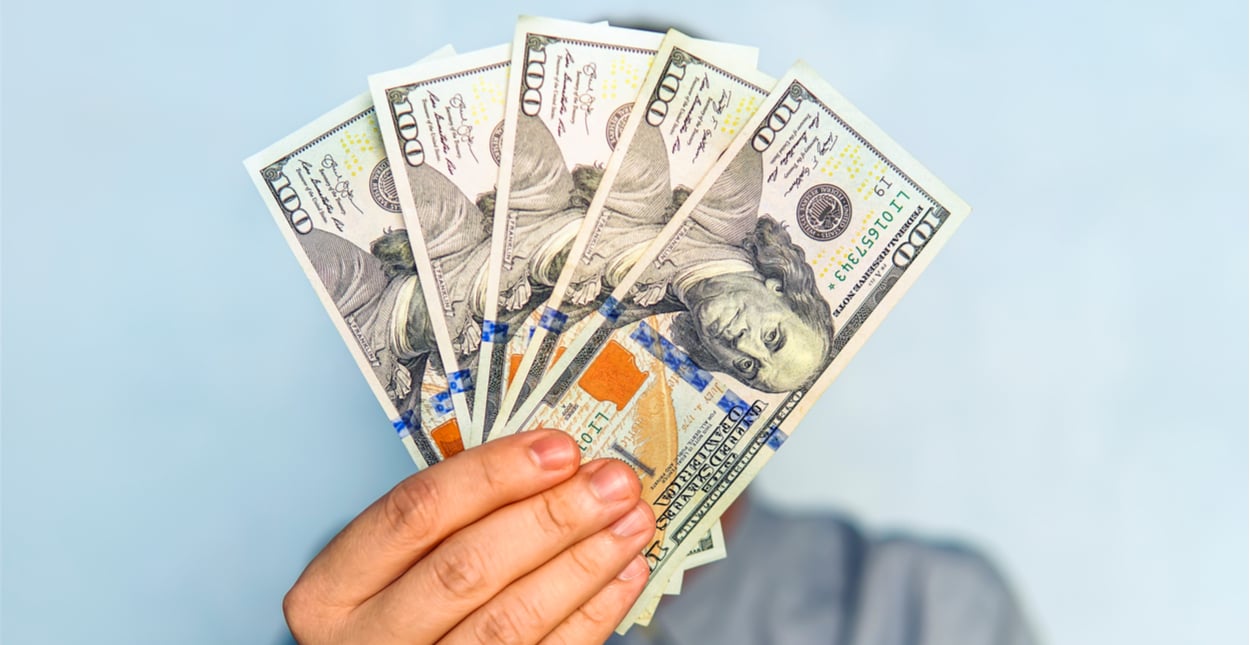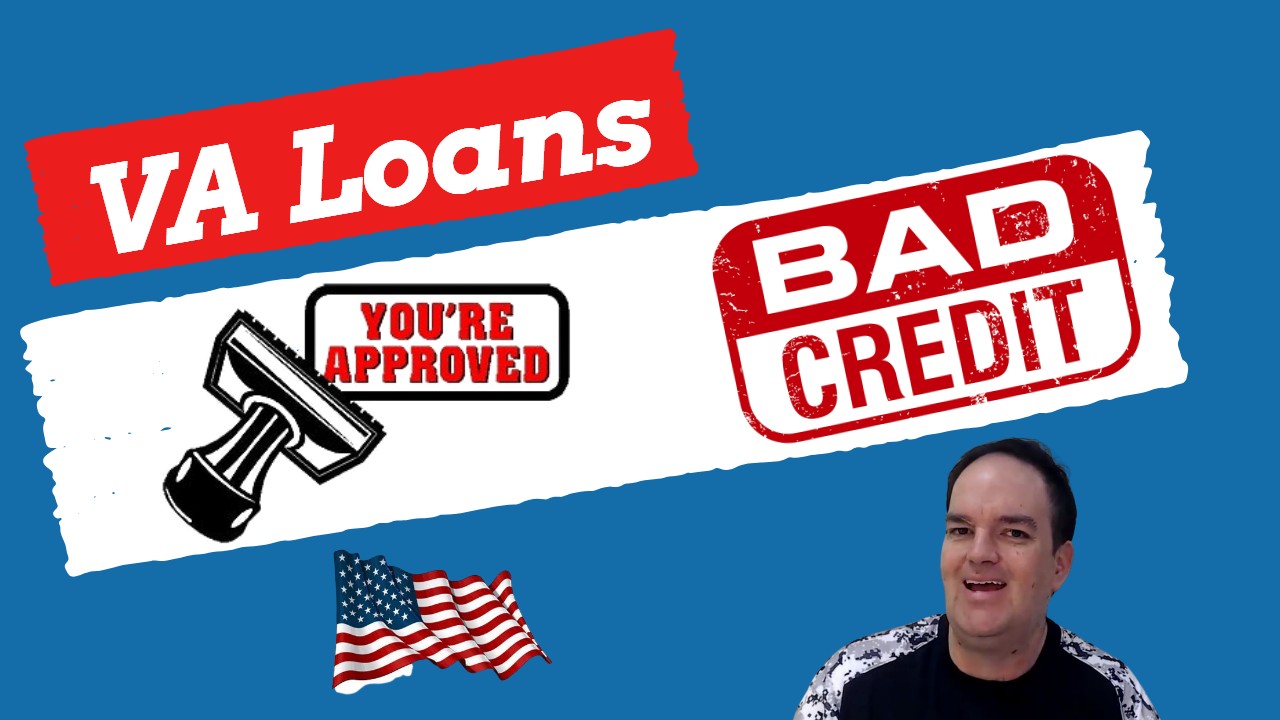

Finance
How To Get A $2000 Loan With Bad Credit
Published: January 12, 2024
Need a $2000 loan but have bad credit? Don't worry! Explore our finance options and discover how you can secure the loan you need, regardless of your credit score.
(Many of the links in this article redirect to a specific reviewed product. Your purchase of these products through affiliate links helps to generate commission for LiveWell, at no extra cost. Learn more)
Table of Contents
Introduction
Financial emergencies can strike unexpectedly, leaving you in need of immediate funds. However, having a bad credit score can make it challenging to secure a loan from traditional lenders. The good news is that there are options available for individuals with less-than-perfect credit. In this article, we will explore how you can get a $2000 loan with bad credit.
Before we dive into the details, it’s important to understand what bad credit means. In the world of finance, your credit score reflects your creditworthiness and is used by lenders to determine your ability to repay a loan. A low credit score is usually the result of missed payments, high utilization of credit, or other negative credit history. Having bad credit can make it harder for you to get approved for loans and may result in higher interest rates.
While getting a loan with bad credit can be a bit more challenging, it’s not impossible. There are lenders who specialize in offering loans to individuals with poor credit scores. By understanding the factors that lenders consider and exploring different loan options, you can increase your chances of getting a $2000 loan.
In the following sections, we will discuss the factors you should consider before applying for a loan, explore different loan options available to individuals with bad credit, and provide tips for improving your chances of getting approved. Additionally, we will look at alternative solutions that can help you meet your financial needs without relying solely on traditional loans.
So, if you’re ready to learn how to get a $2000 loan with bad credit, let’s dive in!
Understanding Bad Credit
Before delving into the process of getting a $2000 loan with bad credit, it’s crucial to have a clear understanding of what bad credit actually entails. Your credit score is a numerical representation of your creditworthiness and is based on factors such as your payment history, debt-to-income ratio, length of credit history, and types of credit accounts.
A credit score typically ranges from 300 to 850, with a higher score indicating better creditworthiness. If your credit score falls below a certain threshold, typically around 580-600, it is considered poor or bad credit. Having bad credit can make it challenging to secure loans, as lenders perceive you as a higher risk borrower.
There are several factors that can contribute to having bad credit. Late payments, defaults, bankruptcies, and high credit card balances can all negatively impact your credit score. Additionally, having limited credit history or no credit history at all can also result in a low credit score.
It’s important to note that bad credit does not necessarily define your financial future. While it may make it more difficult to obtain loans or credit cards, there are steps you can take to rebuild your credit over time.
Understanding the reasons behind your bad credit is the first step towards improving your financial situation. By identifying the factors that led to your poor credit score, you can start taking the necessary steps to rectify them. This may involve paying off outstanding debts, reducing your credit card balances, and making all future payments on time.
Monitoring your credit report regularly is also essential. You can obtain a free copy of your credit report from each of the three major credit bureaus – Equifax, Experian, and TransUnion – once every 12 months. Reviewing your credit report allows you to check for any errors or inaccuracies that may be dragging your score down. If you find any discrepancies, make sure to report them to the appropriate credit bureau to have them corrected.
Remember, improving your credit score takes time and responsible financial behavior. By demonstrating good money management skills and regularly paying your bills on time, you can begin to rebuild your credit and increase your chances of being approved for a $2000 loan with bad credit.
Factors to Consider Before Applying for a $2000 Loan
Applying for a loan, especially with bad credit, requires careful consideration and planning. Before you proceed with your application for a $2000 loan, it’s important to take into account several factors that can impact your loan approval and repayment ability.
1. Your Current Financial Situation: Assess your current income, expenses, and overall financial stability. Determine if you have sufficient income to comfortably make loan payments without putting yourself in further financial strain.
2. Affordability: Calculate your debt-to-income ratio, which is the percentage of your monthly income that goes toward debt payments. Lenders typically prefer borrowers with a lower debt-to-income ratio, as it indicates a lower risk of defaulting on loan payments.
3. Creditworthiness: Understand your credit score and how it impacts your ability to secure a loan. A lower credit score may result in higher interest rates or even lead to loan rejection. Consider taking steps to improve your credit score before applying for a loan, such as paying off outstanding debts and making consistent, on-time payments.
4. Interest Rates: Interest rates can vary significantly depending on your credit score and the lender you choose. Compare interest rates offered by different lenders to find the most affordable option. Keep in mind that a lower credit score may result in higher interest rates.
5. Loan Terms: Review the terms and conditions of the loan carefully. Pay attention to factors such as repayment period, monthly installments, and any hidden fees or penalties. Ensure that the loan terms are reasonable and align with your financial goals.
6. Lender Reputation: Do thorough research on the lender before submitting your application. Check their reputation, customer reviews, and any complaints lodged against them. It’s crucial to work with a reputable lender who offers fair terms and provides excellent customer service.
7. Collateral and Guarantors: In some cases, providing collateral or a guarantor can increase your chances of loan approval. If you have assets that can be used as collateral or a trusted individual who is willing to act as a guarantor, it may improve your loan application.
8. Alternative Options: Consider alternative options before settling on a traditional loan. Explore possibilities like credit unions, online lenders, or peer-to-peer lending platforms. These alternatives may have more flexible requirements and offer better terms for individuals with bad credit.
By carefully considering these factors and conducting thorough research, you can make an informed decision when applying for a $2000 loan. Take the time to assess your financial situation, improve your creditworthiness if possible, and explore different lenders to find the best option that aligns with your needs.
Exploring Different Loan Options
When you have bad credit and need a $2000 loan, it’s important to explore different loan options that cater to individuals with less-than-perfect credit. While traditional banks and credit unions may be less inclined to approve your loan application, there are alternative lenders who specialize in providing loans to those with bad credit. Here are a few of the loan options you can consider:
1. Online Lenders: Online lenders have gained popularity in recent years for their quick and convenient loan application processes. These lenders often have more flexible requirements and can provide loan options for individuals with bad credit. However, be cautious when choosing an online lender, as there are many predatory lenders out there. Do thorough research and read reviews to ensure you are dealing with a reputable lender.
2. Payday Loans: Payday loans are short-term loans that are typically due on your next payday. These loans are known for their quick approval process and minimal requirements. However, payday loans tend to come with high interest rates and fees, so they should only be considered as a last resort. Be mindful of the repayment terms and ensure that you have a plan in place to repay the loan promptly.
3. Secured Loans: Secured loans require collateral, such as a car or property, to secure the loan. Since the lender has an asset to fall back on if you default on payments, they may be more willing to approve your loan application, even with bad credit. However, keep in mind that if you fail to make payments, you risk losing the collateral.
4. Peer-to-Peer Lending: Peer-to-peer lending platforms connect borrowers directly with individual lenders. These platforms have less strict credit requirements and may provide lower interest rates compared to traditional lenders. However, eligibility and loan terms will vary depending on the platform and lenders participating.
5. Credit Unions: Credit unions are non-profit organizations that offer financial services to their members. They often have more lenient lending criteria compared to traditional banks. Becoming a member of a credit union may increase your chances of getting approved for a loan with bad credit.
6. Family and Friends: While it may not be the most preferred option, seeking financial assistance from family or friends can be an alternative to traditional lenders. Be sure to clearly communicate and agree on the terms of repayment to avoid putting strain on your relationships.
When exploring these loan options, be mindful of the loan terms, interest rates, and fees associated with each. Compare offers from different lenders and assess what works best for your financial situation. Remember to borrow only what you need and have a plan in place to repay the loan responsibly.
Tips for Getting Approved for a $2000 Loan with Bad Credit
Getting approved for a $2000 loan with bad credit may seem challenging, but with the right approach, you can increase your chances of securing the loan you need. Here are some tips to help improve your chances:
1. Check Your Credit Report: Before applying for a loan, review your credit report for any errors or inaccuracies that could negatively impact your credit score. Dispute any discrepancies and have them rectified to ensure your credit report reflects an accurate representation of your creditworthiness.
2. Understand Your Credit Score: Familiarize yourself with your credit score and how it affects your loan options. Knowing where you stand allows you to better assess your eligibility and determine the best lenders to approach for a loan.
3. Build a Positive Payment History: Making consistent, on-time payments on your existing debts can help improve your credit score over time. Prioritize paying bills on or before their due dates to demonstrate your ability to manage your financial obligations.
4. Pay Off Outstanding Debts: Lowering your overall debt burden can improve your debt-to-income ratio, which lenders consider when assessing your loan application. Focus on paying off high-interest debts first, such as credit card balances, to reduce your debt load.
5. Consider a Cosigner: If you have difficulty getting approved for a loan on your own, consider asking a trusted friend or family member with good credit to be a cosigner. A cosigner with a strong credit history can increase your chances of loan approval and may help you secure a lower interest rate.
6. Research Lenders: Explore different lenders who specialize in lending to individuals with bad credit. Look for lenders who have lenient eligibility criteria and reasonable interest rates. Compare offers from multiple lenders to find the best option for your needs.
7. Provide Collateral: Offering collateral, such as a vehicle or other valuable assets, can give lenders more assurance in approving your loan. Secured loans may have more favorable terms and lower interest rates than unsecured loans.
8. Prepare a Solid Loan Application: When applying for the loan, be prepared with all the necessary documentation, including proof of income, identification, and any other documents that the lender may require. A complete and well-prepared application can improve your chances of approval.
9. Consider Loan Alternatives: If traditional loans are not feasible, consider alternative options such as credit unions, online lenders, or peer-to-peer lending platforms. These alternatives may have more lenient requirements and provide better loan terms for individuals with bad credit.
10. Improve Your Financial Stability: Lenders are more inclined to approve loans for individuals who demonstrate stability in their financial situation. Increase your chances by maintaining a steady job, having a reliable source of income, and minimizing unnecessary financial risks.
Remember, getting approved for a $2000 loan with bad credit may require extra effort, but it’s not impossible. Implement these tips to improve your creditworthiness, research lenders effectively, and present a strong loan application. With persistence and responsible financial behavior, you can secure the loan you need to address your financial needs.
Alternatives to Traditional Loans
If you have bad credit or are unable to secure a traditional loan, there are alternative options available to meet your financial needs. These alternatives may provide more flexible terms and requirements, making them a viable solution for individuals in challenging financial situations. Here are a few alternatives to consider:
1. Credit Unions: Credit unions are not-for-profit financial institutions that provide services to their members. They often offer lower interest rates and more personalized lending options compared to traditional banks. Becoming a member of a credit union can increase your chances of securing a loan, even with bad credit.
2. Online Lenders: Online lenders have gained popularity for their convenience and accessibility. These lenders often have more lenient eligibility criteria and can offer loans to individuals with bad credit. However, be cautious and research reputable online lenders to avoid falling prey to predatory lending practices.
3. Peer-to-Peer Lending: Peer-to-peer lending platforms connect borrowers directly with individual lenders. These platforms can offer more flexible terms and lower interest rates compared to traditional lenders. Peer-to-peer lending allows individuals to invest in loans, providing an alternative funding source for borrowers with bad credit.
4. Secured Loans: Secured loans require collateral, such as a vehicle or property, to secure the loan. By offering collateral, you reduce the risk for the lender, making it easier to obtain a loan. However, keep in mind that if you default on payments, you risk losing the collateral.
5. Borrowing from Family or Friends: If traditional loans are not an option, consider reaching out to family or friends who may be able to help. Approach the arrangement professionally, clearly outlining the terms and ensuring both parties are comfortable with the borrowing arrangement. However, always prioritize repaying the loan to maintain healthy relationships.
6. Credit-Building Loans: Some lenders specialize in credit-building loans designed to help individuals improve their credit scores. These loans often have lower borrowing amounts and may require regular payments into a savings account, which will be used to repay the loan. These loans can help rebuild your credit while providing access to much-needed funds.
7. Government Assistance Programs: Depending on your situation, you may qualify for government assistance programs that provide financial aid or low-interest loans. Research programs available in your area to see if you meet the eligibility requirements.
8. Employee Assistance Programs: Some employers offer employee assistance programs that provide loans or advances for employees facing financial hardship. These programs may have more lenient requirements and can provide the support you need in difficult times.
When considering these alternatives, it’s essential to carefully evaluate the terms, interest rates, and repayment options. Compare offers from multiple lenders or programs to ensure you choose the best fit for your specific needs and financial situation.
While these alternatives may provide a lifeline for individuals with bad credit, it’s important to remember that responsible borrowing and financial management are crucial. Use these opportunities to improve your financial standing and work towards rebuilding your credit for a brighter future.
Conclusion
Obtaining a $2000 loan with bad credit may pose challenges, but it is not impossible. By understanding your credit situation, exploring different loan options, and implementing the right strategies, you can increase your chances of securing the loan you need.
Before applying for a loan, take the time to assess your current financial situation and determine your affordability. Consider factors such as your income, debt-to-income ratio, and creditworthiness. Understanding your financial standing will help you make informed decisions and choose the most suitable loan option.
Explore different lenders, including online lenders, credit unions, and peer-to-peer lending platforms. These alternative lending sources may have more lenient eligibility criteria and provide more flexible terms for individuals with bad credit. Compare interest rates, loan terms, and reputation, and choose a reputable lender that aligns with your needs.
If traditional loans are not feasible, consider alternative options such as secured loans, credit-building loans, or borrowing from family and friends. These options may offer more favorable terms and lower interest rates, allowing you to meet your financial needs without relying on traditional lenders.
Regardless of the loan option you choose, remember to make responsible financial decisions and prioritize loan repayments. Repaying your loan on time and in full demonstrates good financial behavior and can contribute to improving your credit score over time.
Lastly, take steps to improve your credit. Monitor your credit report regularly, dispute any errors, and maintain a positive payment history going forward. Building a strong credit standing will increase your eligibility for future loans and provide more favorable borrowing terms.
Getting a $2000 loan with bad credit may require some effort, but with proper planning and the right approach, you can secure the funds you need. Use this guide as a starting point, conduct thorough research, and be persistent in your efforts. By taking control of your financial situation, you can work towards achieving your goals and improving your credit outlook.














